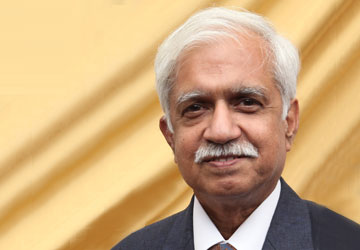How has the die & mould industry changed with the growing demand for speed and productivity?
The industry has witnessed tremendous change in the way dies and moulds (tools) are made, in terms of how they are designed and the machines used to make them. Most of the tool rooms in India have adapted to these changes. They have all adopted the latest CAD/CAM techniques and also upgraded people skills required to use them. There has also been a constant upgradation of machinery used in most tool rooms across India.
The Indian economy is lying low, how are you tackling the situation? Has the rupee depreciation against major currencies affected your business?
This is a double whammy for a capital-intensive industry like tool making. On one hand, when the reduction in the number of orders is putting pressure on selling price, the depreciation of the Indian currency has made various machines much more expensive, resulting in postponement of crucial machine investments. Hopefully, the coming year will ease the situation by better order books.
How do you see the competition with south eastern countries?
The countries from this region that were competing strongly and will continue to do so are Thailand and Malaysia, but now Vietnam is also considered to be an emerging region. China and Taiwan have always been strong competitors, but they are not from South East Asia.
India has become home to various global tooling solution providers, how are you tackling the competition?
The only way to compete is to provide higher quality and better delivery times. This can only be done by continuous adaptation of the latest trends in tool making. This is specially true for methods of production. Particular attention must be paid to remove inefficiencies in the system, thus resulting in better usage of existing resources. This can be done by paying attention to work in progress and adoption of more productive methods to change tooling in machine tools and repetitive parts production.
As the biggest consumer of dies & moulds, automobile industry is in bad shape, which are the other sectors emerging as potential customers?Aerospace sector is emerging and has huge opportunities. The bio-medical sector is hardly developed here and could be an emerging sector in the time to come. For the plastic moulds, the FMCG and energy sector, as well as the appliances sectors are performing strongly. It should be a similar story for the sheet metal and die casting dies.
What sort of demands do you see in the tooling industry, particularly in India?
With constant introduction of new products in automobile, electrical, appliances and FMCG sectors, there will be demand for tooling. Once the economy is stable and new products are introduced in greater numbers, the demand for tools is bound go up.
Do you think SMEs is India are ready to adopt highly automated products?Yes, the SMEs are adapting to the automated production methods as this reduces the wastage in the system and improves the yield from the existing investments.
What are the challenges that the industry is facing in terms of adopting the latest automation solutions in India, considering the fact that we are a price conscious nation?
Undoubtedly, the price parameter is absolute low in India. This is being taken to absurd extremes with attention on price of buying only, rather than the total life cycle costs. This is particularly true for capital equipment including tools. The customers should start evaluating total costs of the lifetime. The more enlightened end users are adopting such evaluation, which helps toolmakers to modernise and deliver better tools at more competitive price.
In your opinion, what are the customers looking for?
High quality, dependable and timely delivery, good follow up service for the tools and of course price.
What per cent of your revenue comes from small enterprises? How important is this market for Unimark?
Around 30-40% of our business comes from the SMEs and hence it is an importnat segment for us.
Could you recall the year 2013 and what do you expect from 2014?
2013 was a very challenging year with lower number of orders and various projects being postponed. This may continue in the first half of 2014 with improvements following in the second half of 2014.
nishant@mfgtechupdate.com


